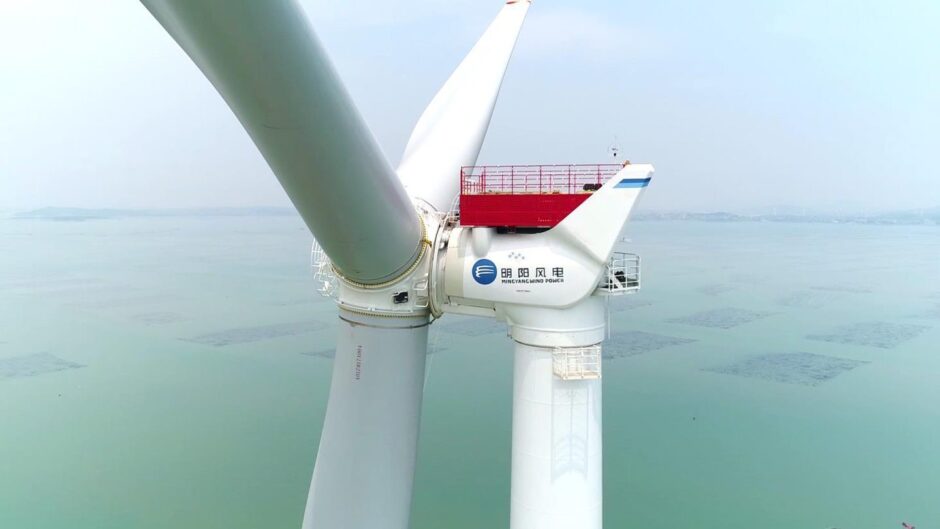 © Supplied by Mingyang
© Supplied by Mingyang A supply chain expert has warned that including a Chinese turbine maker in Scotland’s strategic investment plans for offshore wind would be a threat to energy security.
Last week the Scottish Government announced that some 38 wind supply chain and infrastructure projects with a potential capital value of £6.5bn had completed the first stage of assessment under its Strategic Investment Model (SIM).
Among them is Mingyang Smart Energy, a Chinese turbine manufacturer which hopes to invest in a ‘wind turbine OEM facility’ in Scotland as part of government plans to develop local capability to meet the booming market.
Yet James Glennie, a wind expert working on the UK supply chain, said he was “very disappointed” to see Mingyang on the list of approved firms, and that supporting its plans “would be against the entire ideology” of the SIM process.
Chinese wind entry to Scotland
Mingyang, the largest private turbine manufacturer in China and the country’s fifth largest overall, announced a partnership with Opergy Group last year through which the firm would help its entrance into the UK offshore wind market.
Headquartered in Zhongshan, China, Mingyang already operates across China, and has regional bases in Germany, Vietnam, Korea, Japan, and Brazil.
Norfolk-based Opergy said it would help pinpoint ports and facilities that can house manufacturing facilities for Mingyang turbines and foundations.
Yet Mr Glennie points to a series of national security warnings over the involvement of Chinese firms in UK energy and infrastructure, including those which led to the removal of China General Nuclear from the Sizewell C nuclear plant.
“China has a long history of stealing IP, using state subsidies to support their own industries and conducting a mercantilist trade policy in which they dump their industrial over-capacity into European and US markets – all while refusing Western companies access to their own,” he said in a blog post.
“This is particularly true of wind and solar and is a large part of the rationale behind the European Commission’s Wind Power Package announced in October last year.
“If Mingyang succeeds in using Scotland as a bridgehead into Europe, it would represent a new post-Brexit low, a threat to British energy security, a black mark for Scotland’s relations with Europe and would be against the entire ideology of what the SIM is supposed to stand for i.e. maximising Scottish supply chain benefits.”
Mingyang has been approached for comment.
SIM Stage 2
As part of SOWEC’s announcement last week, three key projects are set to move to Stage 2 discussions, including plans for expansion at Port of Cromarty Firth, a deepwater quay expansion at Port of Nigg and an as-yet undisclosed supply chain investment which remains confidential.
Although some key components are manufactured in the UK, it has yet to lure a turbine maker to its shores.
The recent SIM announcement follows reports that Danish firm Vestas is considering a new facility which could employ around 1,000 people, with Port of Leith suggested as a likely site.
Alongside other Stage 1 plans from the likes for Forth Ports, Kishorn, and Repsol Resources UK is a tower and foundation manufacturing facility spearheaded by Dajin Heavy Industry – a supplier which has already built major components for the likes of Dogger Bank and Moray West.
A further six projects have completed Stage 1 but have asked for details not to be shared outside of SIM discussions.
Mr Glennie suggested Britain must “think strategically” about how best to develop the European wind industry.
“Leaping into bed with China is about as far from that as it is possible to go.”
